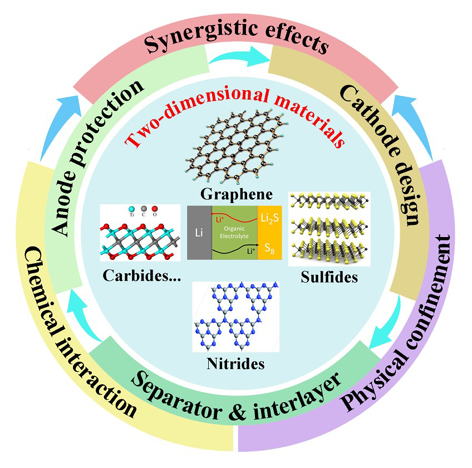
Lithium-sulfur (Li-S) batteries are recognized as one of the most promising advanced energy storage systems due to high energy density, inexpensive and environmentally friendly elemental sulfur. However, the actual applications of Li-S batteries have been intrinsically plagued by capacity fading and low Coulombic efficiency mainly derived from the severe shuttle effect of lithium polysulfides (LiPSs). Recently, two-dimensional (2D) materials have been extensively explored to enhance the performance of Li-S batteries because of their unique 2D structure and diversified physicochemical properties. In this review, we summarized the state-of-the-art advances of 2D materials for advanced high-energy Li-S batteries. To specify their applications, we first overviewed various 2D materials (e.g. graphene, oxides, sulfides, carbides, nitrides) serving as insulating sulfur hosts with high surface area, excellent electrical conductivity and enriched functionality, to significantly buffer the volumetric variation and reduce the pulverization of the active sulfur, and boost the sulfur utilization and the improvement of cycle stability. Second, 2D materials with large lateral size, controllable interspaces, and enriched catalytic sites were good choices for separators and interlayers, which can efficiently prevent the diffusion and migration of the dissolved polysulfides via physical confinement and chemical interaction, revealing the synergistic effects for suppressing shuttle effect and stabilizing high performance. Besides, the 2D nanosheets-based interlayers and separators also contributed to prevent lithium anode from side reaction with LiPSs. Third, graphene and their analogues can act as the integrated interfacial layer and host of lithium metal, and effectively restrain the growth of lithium dendrite and guarantee the prolonged lithium stripping/plating. Particular emphases are given to the unique structures, interfacial interactions, strategies for ingenious assembly and innovations of configuration in Li-S batteries. Finally, the remaining challenges and perspectives of Li-S batteries using 2D materials are briefly discussed.